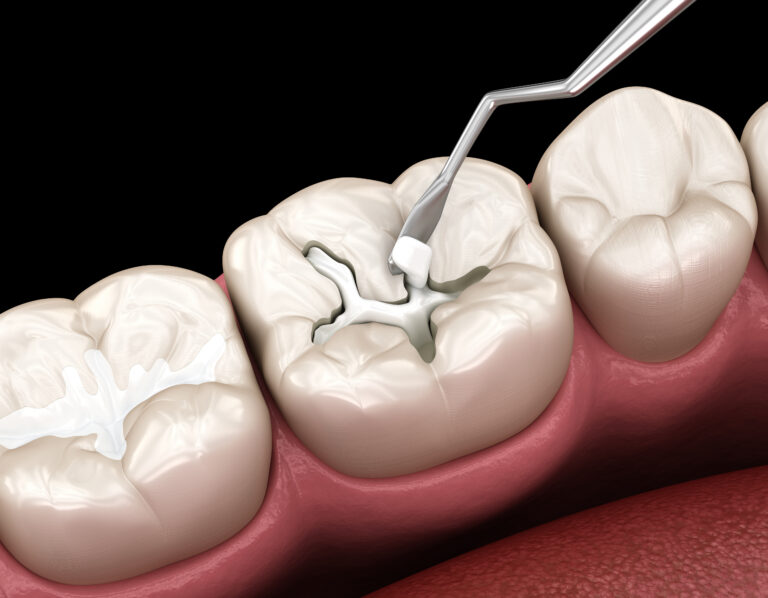A tooth filling is a type of restorative dentistry treatment used to repair minimal tooth fractures, tooth decay or otherwise damaged surfaces of the teeth. Dental filling materials, which include composite, porcelain, and silver amalgam, may be used to even out tooth surfaces for better biting or chewing.
Enamel loss is a common component of tooth decay, and may result in tooth sensitivity. In many cases, tooth sensitivity caused by enamel loss will be significantly improved or completely eliminated once an appropriate dental filling material is placed.

The Procedure
During preventative dental hygiene checkups, or dental emergency visit prompted by a toothache, your dentist will evaluate your teeth, gums, and supporting bone structure. He or she will identify the number of tooth surfaces affected by decay or damage, and then prepare the tooth and necessary surrounding areas for restoration of the damaged area or areas. The decay or damage will be removed with a dental hand-piece or laser, and the area is cleansed to remove bacteria or debris before the restoration is completed.The first step in performing a tooth filling procedure involves isolation of the tooth. Tooth isolation is critical in a composite restoration, because it prevents moisture from interfering with the bonding process. The bonding procedure of tooth filling requires the placement of various adhesives followed by the composite material, which is then hardened with a special bonding light. The completed composite restoration is both functional and natural looking.
Dental Filling Costs
Composite tooth fillings are usually more expensive than traditional amalgam (silver or gold) fillings because they require a more sophisticated process, more expensive materials and additional office equipment. Composite materials offer an aesthetic alternative, and for some people, improvement to traditional amalgam materials. People who have previously received amalgam fillings often return to their dentist to have them replaced with composite fillings.On average, amalgam fillings are expected to last approximately 12 years, while composite fillings are expected to last five to seven years. This of course is dependent on your unique considerations, the care with which you treat your oral hygiene and your commitment to continued dental visits.
For more information about amalgam and composite fillings, contact Eagle Falls Dentistry today.
